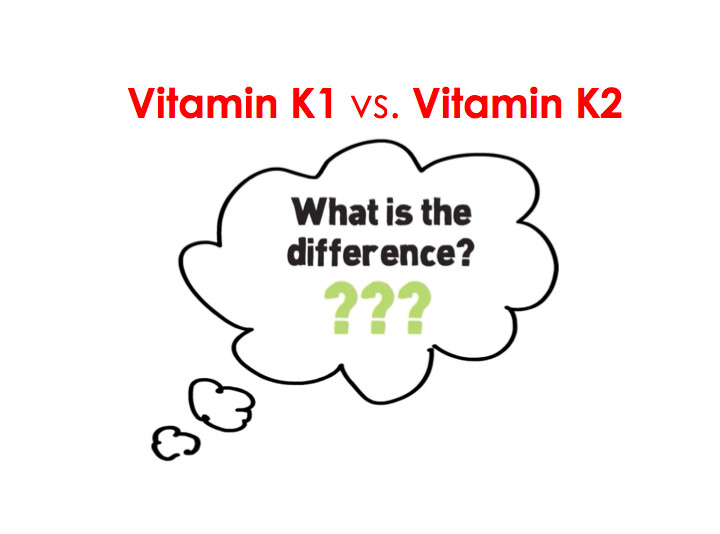Improving your overall health starts with being health conscious, making smart lifestyle choices and focusing on preventative care. Today’s fast-paced world has created a mindset of instant gratification even when health is involved. People want to take a pill and instantly feel a difference, and many do not see value in preventative therapies unless they see a problem first. With poor lifestyle choices today consisting of fad diets, eating processed foods, taking prescription medication, consuming alcohol, over indulging in sweets and artificial sweeteners, the body is working in overdrive to rid itself of toxins and reduce body-wide inflammation. If more time was spent focusing on natural alternatives to prevent illness rather than reacting to illness and treating with prescription drugs, the world would be a healthier place.
The truth is, most people are not aware how good their body is actually designed to feel. This is where enzyme therapy comes into play. For most healthy individuals, our bodies naturally produce an optimal amount of enzymes until we reach our mid- to late-twenties. As we know, some people in their forties may be healthier than someone in their twenties. This can be a result of lifestyle choices, which can effect enzyme production from person to person.
So what are enzymes and why are they vital to your health? Enzymes are biocatalysts or proteins necessary for nearly 3000-4000 of the chemical reactions within our body that are associated with metabolic functions, digestion, detoxification, healthy immune system functioning, growth and natural healing. What does this ultimately mean? It means enzymes help other things work throughout the body. People over the age of 30 have an increased likelihood of enzyme deficiency, which may lead to greater chances of health issues and illnesses (5).
When people think of enzymes, they most often think digestion. However, there are two different types of enzymes: digestive enzymes and systemic enzymes. Digestive enzymes are taken with a meal and help support overall digestive health by breaking down the food a person eats while also helping to improve nutrient absorption.
Many people are enzyme deficient and do not even know it. According to the National Institute of Health, “60 to 70 million people in America suffer from some type of digestive disorder. People who suffer from poor digestive health are commonly linked to low energy, excessive gas, poor skin health, joint pain, inflammation, weight-gain, weak immune system, heartburn and bloating following meals” (9). Whether a person is looking to improve their digestive health or may be avoiding certain foods that commonly aggravate the gastrointestinal tract, implementing a well-balanced digestive enzyme complex ensure the body is properly breaking down fats, carbohydrates, proteins into small substrates that can be utilized for energy production throughout the day.
Much different than the role of a digestive enzyme is a systemic enzyme. Systemic enzymes work to support the body as a whole. They are most notably knows for their five main functions: natural anti-inflammatory, anti-fibrin, blood cleansing, immune system modulating and virus fighting. When considering a systemic enzyme supplement, it is important to look at the proprietary blend and delivery system. In order to ensure maximum absorption of activity, an enteric-coated delivery system is ideal which will protect the enzyme activity until the optimal time of release. The enteric-coated delivery system allows it to get past the stomach and into the small intestine without losing enzyme activity, which allows for better absorption.
Proteolytic enzymes or “protein eating enzymes” are the first line of defense against body wide inflammation, which may spread throughout the body to all major organs. Inflammation is a reaction by the immune system to an irritation which often results in pain, swelling or tenderness. Conventional medicine still tends to use pharmaceutical drugs such as ibuprofen and naproxen to reduce inflammation. However, synthetic drugs have many side effects, both minor and severe, that often hinder long-term use in many people. A well-balanced Systemic Enzyme blend will naturally replenish the many enzymes the body uses to fight inflammation and aid in the repair of damaged tissue (1,3,4,6,8).
Did you know that nearly all injuries and operations result in inflammatory reactions and build up of excess scar tissue which causes pain and swelling? It is a natural protective response to injuries and trauma on a cellular level. However, if the inflammation is not resolved ore reduced in the acute stage, it can become a chronic inflammatory problem (1,4,6). When caring for injuries and during recovery following an operation, “it is important to apply medications for reducing the swelling and anti-inflammatory as well as fibrinolytic agents. If possible, such treatment should produce no adverse effects and should further the healing process of the organism” (10). A safe and effective Systemic Enzyme formula, like Innerzyme’s Pain & Inflammation Blend, offers a natural solution for post-operative scar tissue, inflammation, and pain following sports injuries and surgery whether recent or fifteen plus years ago.
In addition to it’s anti-fibrin properties, systemic enzymes are also known for their ability to cleanse the blood of excess fibrin and exogenous material. Cleaner blood means better nutrient absorption and improved circulation. So how do these toxins and fibrin get into the blood in the first place? The organs and cells in our bodies dispose of these materials in our blood, which can cause clots, poor circulation, blood thickening and other health issues (2).
How about immune system support and the ability to fight off viruses? Systemic enzymes assist the body to balance the immune system and restore a steady state to the body. A low functioning immune system means the body is more susceptible to disease. However, an extremely high functioning immune system will often create antibodies that attach the tissues within the body such as with autoimmune diseases or arthritis. Supplementation of a well-balanced systemic enzyme may help regulate the immune system and eat away at those antibodies that are attacking the body’s tissue creating a disease state within the body (7).
When it comes to viruses, protein cell walls build up around a virus and then bond together and replicate to cause harm throughout the body. The body knows what the body needs and these harmful protein walls are definitely not needed. The good thing about enzymes is they already know what protein to leave alone and what “foreign” protein to attack and eat away in order to inhibit the replication of the virus (7).
Dr. Eli Hammer, Medical Director of The Hammer Institute for Anti-Aging Medicine, states, “I have used systemic enzymes extensively in my practice along with taking them personally for a few years, seeing dramatic reductions in pain and inflammation, and therefore, significant improvements in quality of life. Of all the systemic enzyme brands on the market, I truly believe Innerzyme has finally optimized the proper enzyme blend, while also vastly improving upon the delivery system for better efficacy and ease of administration” (3).
Someone who lives a healthy lifestyle comprised of a balanced diet, regular exercise and proper nutritional supplementation will ultimately help their body to maintain wellness and regulate efficiently.
Learn more about the benefits of enzyme therapy with Innerzyme, click here!
References:
- Beth Kapes, Bromelain Health Article. The Gale Group Inc., Gale, Detroit, 2005. Online.
- Ernst E., Matrai A.: Oral Therapy with proteolytic enzymes for modifying blood rheology. Klin Wschr. 65 (1987), 994. 9)
- Hammer, Eli J., MD. “Benefits of Enzyme Therapy, Innerzyme & Anti-Aging.” Personal interview. 10 May 2012.
- Hoemecke R, Doenicke A. Perioperative enzyme therapy. A significant supplement to postoperative pain therapy? Anaesthesist. 1993 Dec;42(12):856-61.
- Howell, Edward, and Maynard Murray. Enzyme Nutrition: The Food Enzyme Concept. Wayne, NJ: Avery Pub. Group, 1985. Print.
- Judith Sims, Rebecca J. Frey PhD, Chymotrypsin Health Article. The Gale Group Inc., Gale, Detroit, 2005. Online.
- Kunze R., Ransberger K., et at: Humoral immunomodulatory capasity of proteases in immune complex decomposition and formation. First International symposium on combination therapies, Washington, DC, 1991.
- Miller. Proteolytic enzymes in inflammation: rationale for use. Postgrad Med. 1956 Jan;19(1):16-22.
- National Institutes of Health, U.S. Department of Health and Human Services. Opportunities and Challenges in Digestive Diseases Research: Recommendations of the National Commission on Digestive Diseases. Bethesda, MD: National Institutes of Health; 2009. NIH Publication 08–6514. http://www.nih.gov/
- Wrba, H. & Pecher, O. Enzymes: A Drug of the Future. Ecomed Verlagsgesellschaft AG & Co., 1993. Print.
Check out these other great educational resources!
Can Enzyme Deficiency Make You Tired?
Sirah Dubois, July 27, 2011. LIVESTRONG.COM
Laboratory Study Shows Turmeric May Have Bone-Protective Effects
National Center for Complementary and Alternative Medicine, September 8, 2010
Evidence in Mice May Spur More Research on Fish Oil and Curcumin for Alzheimer’s Disease
National Center for Complementary and Alternative Medicine, July 15, 2009
Researchers Investigate Anti-Inflammatory Effects of Pineapple Extracts
National Center for Complementary and Alternative Medicine, August 1, 2006
Your Vitamin-D Level, Part I: How’s Your Mood?
Margaret Furtado, M.S., R.D., November 16, 2011
Bromelain Health Article
Beth Kapes, The Gale Group., Gale, Detroit, 2005
Enzymes For Ulcerative Colitis
Jean Bardot, Livestrong.com, August 11, 2011
Turmeric for Depression
Andrew Weil, M.D., 2011
Turmeric-Natural Medicinal Properties
Joan Schonbeck, Rebecca J. Frey PhD, The Gale Group Inc., Gale, Detroit, 2005
White Willow Health Article
Jennifer Wurges, Rebecca J. Frey PhD, The Gale Group Inc., Gale, Detroit, 2005
Chymotrypsin Health Article
Judith Sims, Rebecca J. Frey PhD, The Gale Group Inc., Gale, Detroit, 2005









